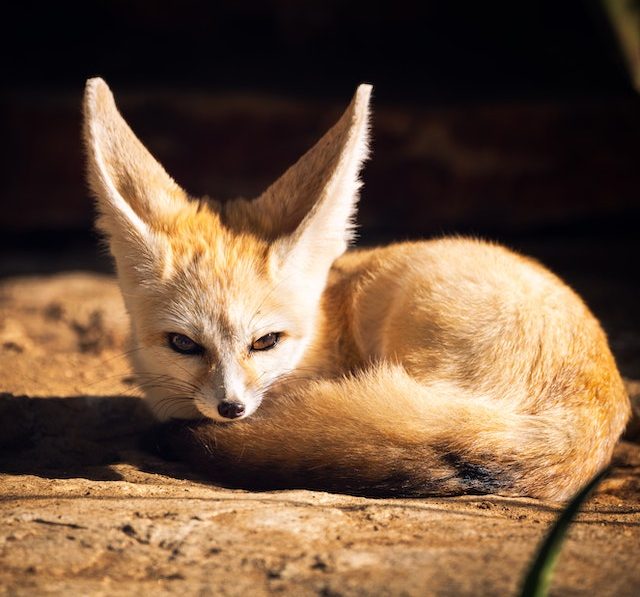Fox spirits or fox fairies appear in tales across Asia under various different names. In China they are known as huli jing or huxian, in Japan as kitsune and in Korea as gumiho or kumiho. They are all shapeshifters, usually turning into beautiful women, and they have multiple tails. They are known as spirits for their supernatural powers, not for being ghost-like in any way.
Fox spirits appear in numerous myths, some dating back hundreds of years. A nine-tailed fox brought good fortune to the character of Yu the Great, a legendary king who was said to have created a system to stop frequent floods as well as killing Xianglu, a nine-headed snake.
In Chinese mythology a fox can adopt human form when it gains sufficient power – sometimes being fifty years old and, in other accounts, being five hundred – and can ascend to the celestial realm once it’s a thousand years old. In Japanese myths fox spirits can have anything up to nine tails, but the more tails a fox fairy possesses, the more powerful it is until it reaches the point where it becomes all-knowing.
There are 13 different kinds of kitsune related to either the celestial world, darkness, earth, fire, forest, mountain, ocean, river, sound, spirit, thunder, time or wind. Evil versions of the kitsune are called nogitsune and they can kill people or devour their life-force. Kitsune sometimes act as messengers for the spirit, Inari. In human form they sometimes retain a tail or have a shadow or reflection that shows their true fox appearance.
Gumiho, a.k.a. kumiho, usually kill people, sometimes gaining power by consuming their hearts or livers. They generally take the form of women who seduce and kill men. In older tales they are sometimes kind-hearted.
Foxes sometimes appear in British folklore too, often as cunning or mischievous creatures. The Celtic river goddess, Sionna, can appear in human or fox form. Reynard the Fox is a popular trickster from Medieval tales who is usually depicted as a fox living a human-like life, but sometimes also changes into a human. “Aesop’s Fables”, which is available in various versions with or without illustrations, also includes various fox characters.
You can read about fox spirits in many novels, including the 16th century Chinese novel, “The Investiture of the Gods” (a.k.a. “Fengshen Yanyi” or “Fengshen Bang”), about a huli jing that takes control of the body of a queen named Daji and helps her husband invent new methods of torture, resulting in an uprising against them. There is an English translation of it by Katherine Chew here (US link).
 The kitsune stars in the series of manga books, “The Fox and Little Tanuki” (US link) by Tagawa Mi, which is based on an ancient myth. It tells of a bad kitsune called Senzou who causes havoc until he’s caught by the sun goddess. He is later freed but told he can only regain his powers if he looks after a young tanuki – a real creature also sometimes called a raccoon dog – that will one day serve the deities.
The kitsune stars in the series of manga books, “The Fox and Little Tanuki” (US link) by Tagawa Mi, which is based on an ancient myth. It tells of a bad kitsune called Senzou who causes havoc until he’s caught by the sun goddess. He is later freed but told he can only regain his powers if he looks after a young tanuki – a real creature also sometimes called a raccoon dog – that will one day serve the deities.
You can also see an example of a Korean fox spirit in “My Girlfriend is a Gumiho” on Netflix, as well as huli jing in “Eternal Love” and “Love, Death and Robots”.
If you want to write about fantasy creatures, you can find out about more than 150 of them in my non-fiction bestiary, “The Writer’s Guide to Mythical Creatures (Writing Fantasy)” [US link; UK link]. It is written specifically for writers, so it includes descriptive details, plot ideas and symbolism associated with the different creatures. There are also sections suggesting roles these creatures can take on within a fantasy novel and how to use them well in your plot.






One Comment
Pingback: